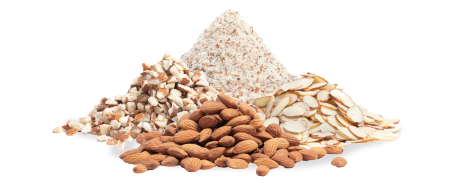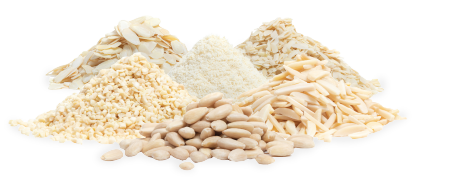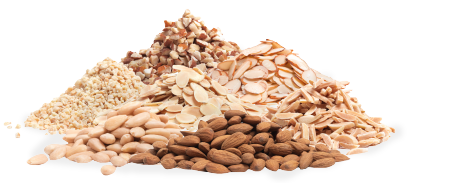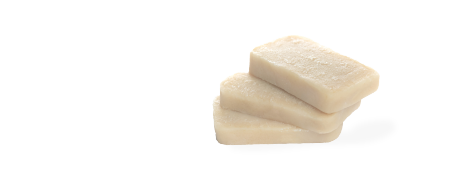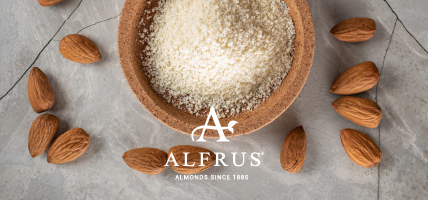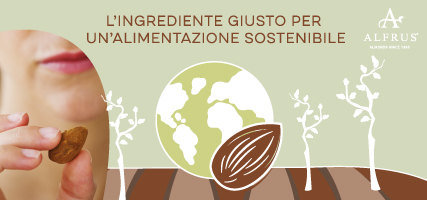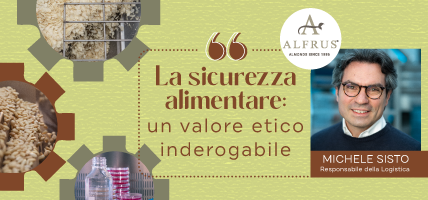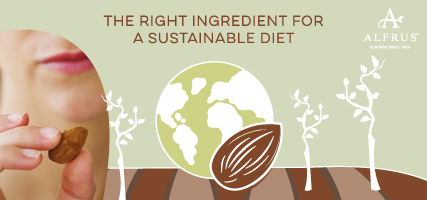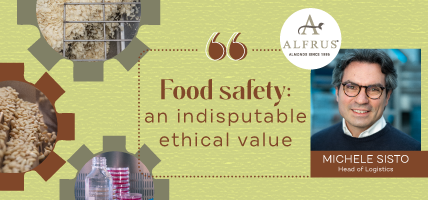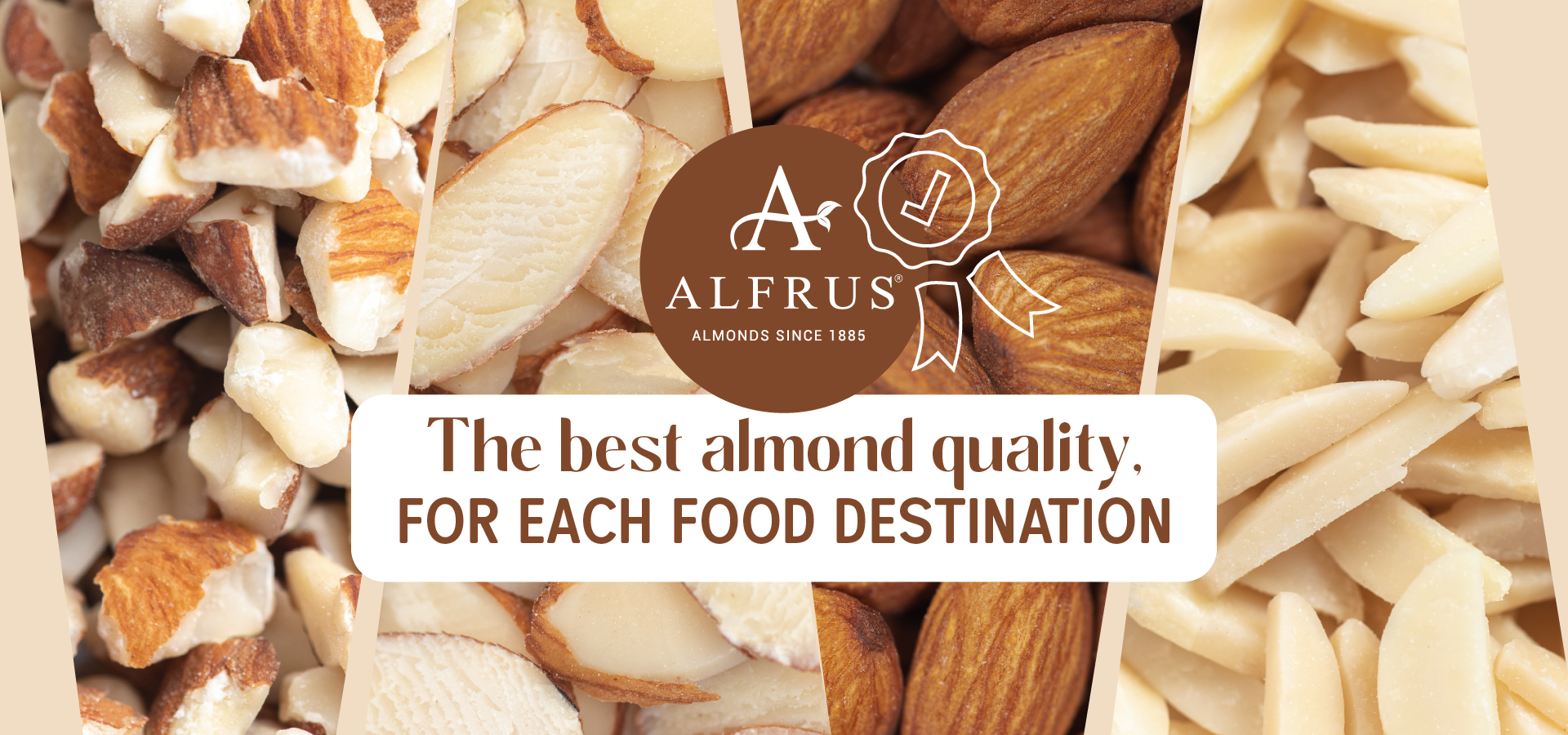
How to identify the best almonds for industry
The variety of their formats and the versatility of their flavor make almonds the best ingredients for different food applications, including confectionery, bakery and pastry, dairy products, prepared foods and snacks.
However, almonds are not all the same. And not all almonds are suitable for a particular food industry sector, because there is a most suitable quality for each one of them. That’s why at Alfrus we focus on the the careful selection of the product for each intended use and in a processing that respects the needs of each customer.
UNDERSTANDING ALMONDS QUALITY GRADES WITH ALFRUS
In order to define the best almond variety, size, shape and quality for each production or commercial purpose, we must rely on specific classifications.
For the Californian almonds that we work at Alfrus, the different grades of quality are established by the U.S Department of Agriculture (USDA), according to the allowable minimum standards and tolerances for each grade.
Depending on their ultimate use, almonds’ quality grade may be more or less relevant. The highest quality grade is U.S Fancy, typically appropriate for products where the visual appeal of almonds is essential. The following quality grades are:
- U.S Extra No.1 – Ideal for food applications where the appearance of almonds is slightly less important.
- U.S No.1 (Supreme) – Mostly selected by industries for whole almond applications or for further processing like blanching and roasting.
- U.S Select Sheller Run – Mid-quality grade, good for applications where the almond is incorporated with other ingredients, which is why chipped and scratched kernels are accepted, or for further processing, like blanching, grinding, roasting and slicing.
- U.S Standard Sheller Run – Suitable for blanching. The quality level is lower because of the high number of cracks, almonds damaged by mechanical shelling and almonds affected by pests.
Well established parameters according to the shape and size affect the grading of quality, such as the presence of:
- DISSIMILAR ALMONDS – When there are different varieties of almonds in one load.
- DOUBLE ALMONDS – When two kernels develop in one shell and one side is flat while the other one is concave.
- CHIPPED OR SCRATCHED ALMONDS – When almonds feature a loss of kernel skin.
- FOREIGN MATERIAL – When there are pieces of shell, hulls and other materials.
- PARTICLES AND DUST – When there are foreign material fragments.
- SPLIT AND BROKEN ALMONDS
- DEFECTS – When almonds are characterized by any defect that materially compromises their aesthetic appearance, edibility or quality (gum, shrivel, brown spots and discoloration).
- SERIOUS DEFECTS – When almonds feature any defect that makes them unsuitable (decay, rancidity, insect injury and mold).
It is important to specify that all these defects do not pose a threat to human health.
The procedures almonds of lower quality are subjected to during their processing, such as those implemented by optical sorters (state-of-the-art machinery able to detect visible and non-visible defects through infrared rays, BSI or simple chromatic difference) and the heat ones (including blanching) can ensure the absolute wholesomeness of the end product.
Following that determination, it is important to highlight that the quality, shelf-life and nutritional properties of almonds, even the best ones, can inevitably be compromised.
These two aspects depend on the following factors:
- The original features of the variety;
- The environment during production, processing and storage phases;
- The processing;
- The packaging process;
The best way to guarantee and preserve the quality of these small seeds is to keep them under controlled conditions, but also to use specialized techniques and state-of-the-art equipment during harvesting, processing and packaging phases.
Our company focuses on the quality and wholesomeness of the raw material through food safety inspections and quality checks along the entire production line.
As previously mentioned, even the processing itself can affect almonds’ shelf-life. This happens because cutting and blanching processes often increase the area of exposed surface and start the oxidative process that can reduce their shelf-life. The roasting process also needs particular care, as the high temperatures almonds are subjected to can damage them, in absence of oxygen.
The humidity of the surrounding environment can also affect the consistency, as well as the shelf-life and nutritional properties of almonds. It has been proved that aroma, hardness and crunchiness decrease with increasing humidity. Therefore, we must focus on the reduction of humidity in the processing and storage environment, with a temperature of 12° and humidity of 65%, and on heat-sealed barrier packaging, such as the one we offer at Alfrus.
Therefore, relying on professionals in order to choose the right and most suitable almonds is the best way to guarantee the optimal quality of the purchased product to your company and its customers.
For this reason, we select the most suitable almonds to become the value-added ingredient of each industry production, according to the specific destination.
Because attention, precision and customization have always been the three pillars of almond processing, here at Alfrus.
30 November 2023
